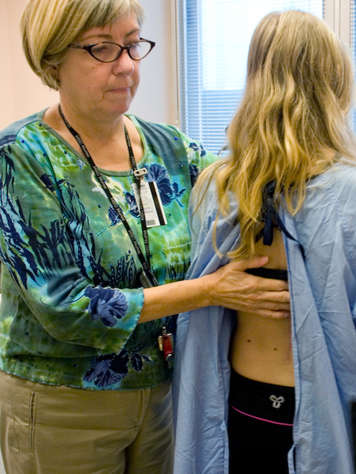The need for treatment depends on the type and size of your teen's curve.

Will your teen’s curve get bigger?
There are several factors that will affect whether your teen’s curve will progress. For example, their curve is more likely to increase if they are very young and still growing, especially if they have not yet reached puberty.
Will your teen’s curve need treatment?
In general:
- If your teen has a small curve of less than 20 degrees, they may only need to be observed over time. They might see a surgeon every six months to check if their curve is getting bigger.
- If your teen’s curve is medium-sized, between 20 to 50 degrees, they may either be observed over time or treated with a brace. They may only need a brace during their growth spurt and it may be discontinued when they are finished growing. After they are finished growing and the brace is discontinued, they will see the surgeon every six months to check if the curve is getting bigger.
- If your teen has a larger curve, greater than 50 degrees, they may require surgery. Surgery is done to correct or improve the curve and to keep it from getting bigger. This website will focus on the surgical treatment of scoliosis.